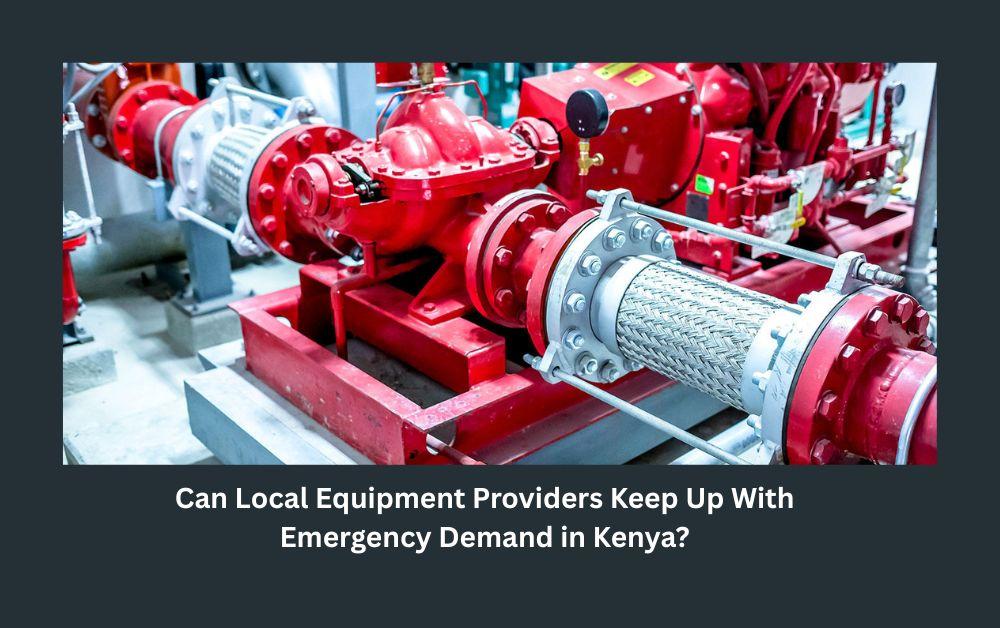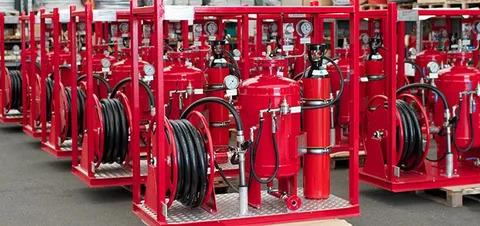Can Local Equipment Providers Keep Up With Emergency Demand in Kenya?

Emergencies, whether caused by fire, natural disasters, or industrial accidents, test the resilience of any country’s safety infrastructure. In Kenya, rapid urbanization and industrial growth have amplified the need for reliable emergency response systems. But with increasing demand, an important question arises: are local equipment providers capable of keeping up with the challenges of modern emergency management?
The Role of Suppliers in Kenya’s Emergency Preparedness
When talking about emergency response, one cannot ignore the role of fire fighting equipment suppliers in kenya. These businesses are the backbone of fire safety, ensuring that municipalities, factories, hospitals, and schools have access to extinguishers, alarms, hydrants, protective gear, and more. Local suppliers are tasked with balancing affordability and quality, all while meeting international safety standards.
But supply is only one part of the equation. Equally important is whether these suppliers can adapt quickly to the growing needs of both urban and rural communities.
Rising Emergency Demands in Kenya
1. Urbanization and Fire Risk
Nairobi, Mombasa, Kisumu, and other cities are expanding at unprecedented rates. With dense housing, traffic congestion, and commercial growth, the probability of fire-related emergencies is higher than ever. Local suppliers are under pressure to provide scalable solutions that meet the needs of large populations.

2. Industrial and Energy Sector Growth
Kenya’s industrial sector has been expanding steadily, from oil and gas to manufacturing plants. Each facility requires specialized fire suppression systems, from sprinklers to foam-based solutions. Emergency demand, therefore, extends beyond basic fire extinguishers into advanced, high-tech equipment.
3. Climate Change and Environmental Hazards
Rising temperatures, droughts, and other climate-driven events increase the chances of wildfires and related disasters. This means equipment providers need to stock gear not just for buildings but also for large-scale outdoor emergencies.
Are Local Providers Equipped to Handle the Pressure?
The performance of fire fighting equipment suppliers in kenya is measured not only by the availability of stock but also by how well they keep pace with evolving technologies and compliance standards. Some suppliers have successfully invested in modern equipment and built partnerships with international brands. However, smaller players often face challenges such as limited budgets, supply chain delays, and lack of technical expertise.
Strengths of Local Equipment Providers
Community-Centric Service
Local suppliers understand the unique needs of Kenyan communities, from informal settlements to remote counties. Their ability to customize solutions gives them an advantage over international providers.
Faster Response Times
Unlike overseas imports that can take weeks, local providers can deliver much faster. This speed is critical when municipalities or companies need urgent replenishments after an emergency.
Affordable Pricing
Local businesses can offer products at relatively lower prices by eliminating shipping and import costs, making safety equipment more accessible to smaller businesses and households.
Key Challenges Facing Providers
1. Inconsistent Quality Control
Not all suppliers maintain consistent adherence to global safety standards. In some cases, poor-quality imports find their way into the market, endangering lives.
2. Limited Training and After-Sales Support
Fire safety is not just about equipment but also about knowledge. Many suppliers lack the capacity to train users or offer ongoing maintenance, creating gaps in readiness.
3. Supply Chain Dependencies
Kenya still relies heavily on imports for advanced firefighting technology. Disruptions in shipping, currency fluctuations, or geopolitical issues can hinder local availability.
4. Regulatory Gaps
Although Kenya has fire safety laws, enforcement remains weak. Without strict compliance monitoring, substandard products may continue to circulate.
What Needs to Change?
Investment in Innovation
Local providers must invest in technology such as smart alarms, IoT-connected fire systems, and environmentally friendly extinguishers. These innovations will prepare them for future demand.
Stronger Partnerships
Collaboration with international manufacturers can help fill gaps in technical expertise while building credibility in the market.
Training and Awareness Campaigns
Suppliers who offer training sessions for fire marshals, safety officers, and facility managers not only increase customer trust but also improve community resilience.
Government Support
Stronger policies, subsidies for quality equipment, and better enforcement of standards will ensure suppliers remain competitive while protecting public safety.
The Role of Public and Private Collaboration
To truly meet emergency demand, Kenya requires synergy between the public sector and private suppliers. Municipal fire departments, for instance, could benefit from partnerships with private equipment providers for both supply and maintenance. Similarly, industries can collaborate with local vendors for tailor-made fire safety solutions.
A Look at the Future of Emergency Equipment Supply
Digital Solutions
Online ordering platforms and real-time stock management will enable faster distribution, especially in remote areas.
Mobile Fire Units
As wildfires and rural emergencies rise, suppliers may begin offering portable fire units designed for off-road use.
Regional Expansion
Some Kenyan suppliers are expanding into neighboring East African countries, which could bring in larger revenue streams, helping them scale operations domestically as well.
Balancing Demand With Reliability
The future of Kenya’s emergency preparedness relies heavily on whether local suppliers can maintain reliability under pressure. Demand is expected to grow exponentially in the next decade, driven by industrialization and climate challenges. Local providers that embrace innovation, training, and compliance will stand out as trusted partners in this critical sector.
Conclusion
Local equipment providers in Kenya are at a crossroads. On one hand, they have the advantage of proximity, community knowledge, and faster service. On the other, they face challenges in quality control, supply chain management, and adapting to new technologies. If these hurdles are overcome, Kenya’s emergency response systems will become more robust, saving countless lives and properties.
Ultimately, the question isn’t just whether local suppliers can keep up with demand—it’s whether they can grow into leaders who set the standard for safety in East Africa.
- Art
- Causes
- Crafts
- Dance
- Drinks
- Film
- Fitness
- Food
- Games
- Gardening
- Health
- Home
- Literature
- Music
- Networking
- Other
- Party
- Religion
- Shopping
- Sports
- Theater
- Wellness


